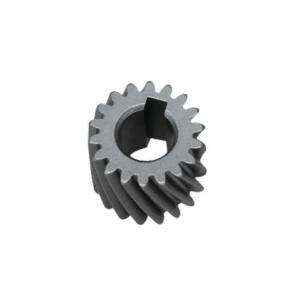Bevel gears are a type of gear used in many robotic systems to
transmit motion between intersecting shafts at a specific angle.
1. Tooth Profile: Bevel gears have a unique tooth profile that is
optimized for transmitting power at various angles. The most
commonly used tooth profile for bevel gears is the involute
profile, which ensures uniform load distribution and minimal
backlash.
2. Angle: Bevel gears are specifically designed to transmit motion
between intersecting shafts at an angle other than 90 degrees. The
angle between the shafts can vary depending on the specific
application requirements.
3. Efficiency: Bevel gears are known for their high efficiency in
transmitting power. They typically have efficiency levels above
95%, resulting in minimal power loss during operation.
4. Load Capacity: The load capacity of bevel gears depends on
factors such as the material used, tooth profile, and gear
geometry. It is important to consider the anticipated loads and
torque requirements of the robot when selecting or designing bevel
gears.
5. Noise and Vibration: Proper design and manufacturing techniques
can help reduce noise and vibration in bevel gears. Precision
machining and surface finishing can minimize gear meshing noise and
improve overall system performance.
Advanced manufacturing equipment
DH has multiple CNC 7-axis 5-linkage spiral bevel gear grinding
machines and gear milling machines that can process high-reduction
ratio hypoid and transverse cured tooth coupling.
Advanced testing equipment
Utilize a high-precision gear measurement center to complete gear
pitch accuracy detection, tooth profile error detection and inverse
correction of tooth profile errors.
Professional software
Our factory has a complete set of software to realize digital
closed-loop manufacturing of spiral bevel gears, Functions such as
gear design, strength calculation, contact analysis, tool
calculation, tooth profile error reversal, etc. can be realized.
Machining methods include five tools machining(fixed setting) &
G-plete of tapper , spiral format tilt(SFT) method & hypoid
format tilt (HFT) method of Cycloid equidep, etc.


